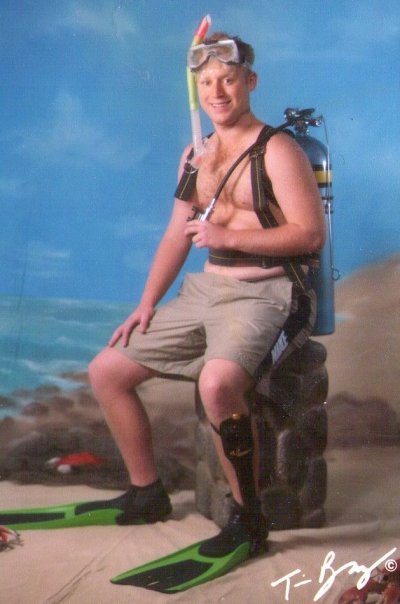
|
RESEARCH
I have broad interests where bioinformatics meets the "wet-lab" (what some call a PCR bench). Particularly I am interested in evolutionary processes that lead to biodiversity we see in today’s aquatic environments. I am currently Co-Advised by Dr Etsuko Moriyama and Dr. Guillermo Orti. Bioinformatics: Although my foundation has been built upon molecular techniques acquired in the lab I have found that incorporating bioinformatics into my analyses is becoming quite useful. Thanks to the development of high-throughput sequencing the fields of phylogenetics and population genetics are rapidly shifting to incorporate genomics. The hindrance in working with large data sets for evolutionary studies is the ability to manipulate, organize, and retrieve the data. By utilizing bioinformatic methods I am able to pick up where the lab bench leaves off taking advantage of the data which is available online and manipulating my own data which I have obtained in the lab. Although my skills in this area are in their infancy I hope to in the near future further explore the possibilities of incorporating simulation data and utilizing scripts to further enhance my other areas of interest below. Phylogenomics and Systematics: The combination of molecular sequence data, morphological characteristics and geological events assist in our understanding of processes which have lead to speciation and essentially the diverse groups we see in existence today. An overall goal for those who study evolutionary histories is to reconstruct the tree of all life, however, as researchers are now resolving evolutionary relationships of different groups it is becoming apparent that there are always some branches that are not easily resolved. One area on the tree of life I am interested in is testing the evolutionary hypotheses regarding basal of ray-finned fishes (actinopterygiian) relationships. There have been conflicting hypothesis regarding relationships among these groups which has been based on all types of different data. These various lineages constitute a group of fishes that were once dominant species (Bichir, Sturgeon, Paddlefish, Bowfin, and Gar) and are now only remnants representing ancestors for all ray-finned fishes we see today. I am currently integrating EST’s and high-throughput sequencing to identify orthologous loci for phylogenomic analysis among these basal lineages of ray-finned fishes as an alternative method in resolving these relationships. Phylogeography and Population genetics: There are varying levels one can perceive the evolutionary process occurring, and within and between populations is no doubt an interest of mine. Aquatic environments for me are the most interesting areas to study phylogeography and population genetics as the localities in which your species of interest may inhabit is limited to specifically these areas. Because of my interest in this area I have developed ongoing collaborative relationships for various projects: Cichla – Publications K. R. O'brien, J. Macrander , J. A. Baker. 2009. The effects of egg size and food supply on the survival growth and condition of threspine stickleback (Gasterosteus aculeatus) fry.(in prep) C. Li, M. L. Bessert, J. Macrander , G. Orti. 2009. Low variation but strong population structure in mitochondrial control region of plains topminnow, Fundulus sciadicus. Journal of Fish Biology 74:1037 - 1048. C. Li, M. L. Bessert, J. Macrander , G. Orti. 2007. Microsatellite loci for hte plains topminnow (Fundulus sciadicus, Fundulidae). Molecular Ecology Notes, 7: 691 - 693. Presentations Biotechnology and Bioinformatics Symposium, Lincoln NE (2009) Integrating EST's and High-Throughput sequencing to Identify Orthologous Loci for Phylogenomic Analysis: A Case Study among Basal Ray-Finned Fishes (Actinopterygii) *Won Best Poster Midwest Ecology and Evolution Conference, Lincoln NE (2009) Construction and Screening of Microsatellite Library for Five Species of Amazon Cichla Joint Meeting of Ichthyologists and Herpetologists, St. Louis MO (2007) Phylogeography and Conservation Genetics of the Plains Topminnow (Fundulus sciadicus) in Nebraska and Missouri Undergraduate Research Conference, Universtiy of Nebraska - Lincoln (2006) Population Dynaimcs of the Plians Topminnow (Fundulus sciadicus) Teaching Experience 2009 Spring Vertebrate Zoology Laboratory (BIOS 386L) UNL 2008 Introduction to Biology (BIOS 101L) UNL 2005 Biology of Microorganisms (BIOS 111L) UNL Favorite Links |